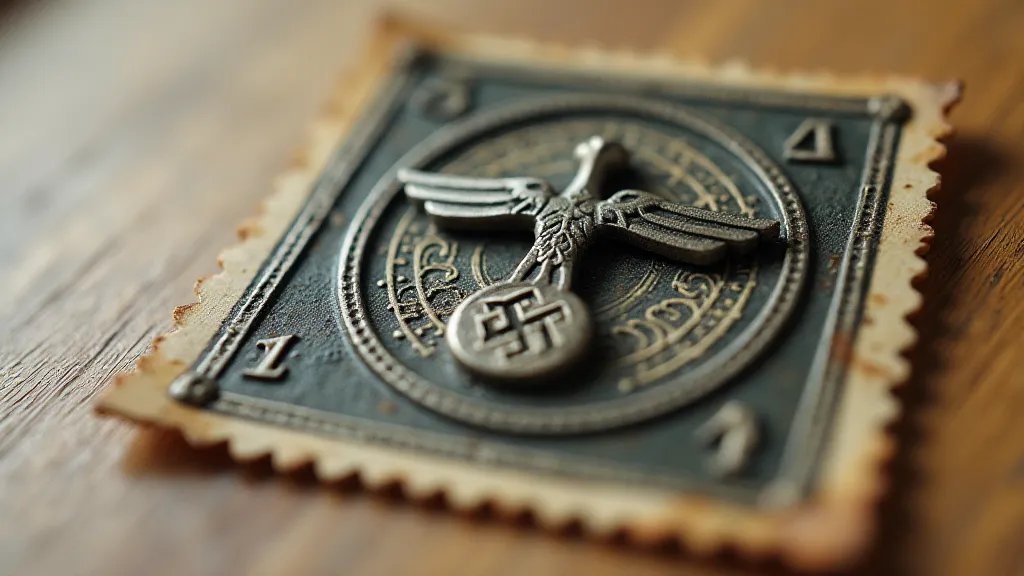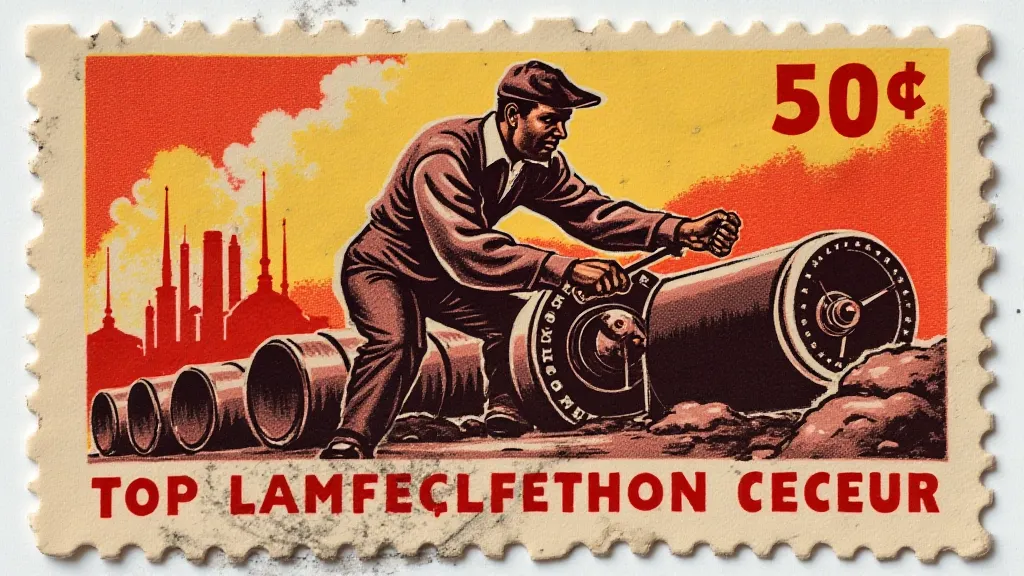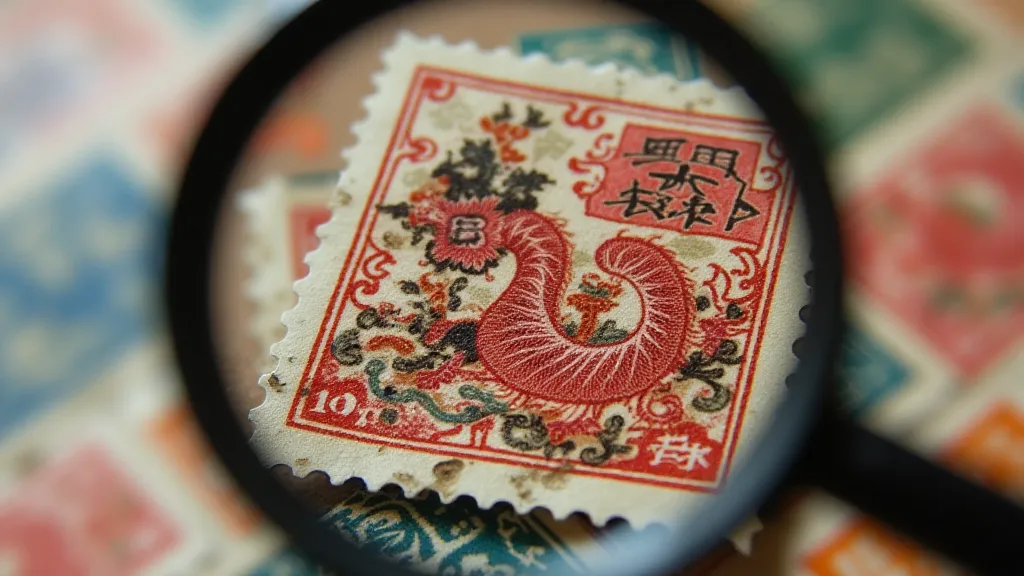The Miniature Stage: How Stamps Became Vehicles for Propaganda & Political Commentary
There's a quiet magic in holding a vintage postage stamp. It's more than just a piece of paper with glue on the back. It’s a tiny window into a moment in time, a silent witness to history unfolding. And, as I’ve discovered through years of collecting philately – the study of stamps – these miniature canvases were often far more than just a means of paying for postage; they were powerful vehicles for propaganda, political commentary, and the subtle shaping of public opinion.
My grandfather, a quiet man with a twinkle in his eye, introduced me to stamp collecting when I was a boy. He's the one who first pointed out that stamps weren’t simply decorative. He showed me a set of stamps from post-war Germany, depicting scenes of rebuilding and national pride. “Look at this,” he's say, tracing a finger across the image of a newly constructed bridge. “They weren’t just showing you what was happening; they were telling you how to feel about it.”
The Birth of the Propaganda Stamp
The concept of using stamps for more than just conveying mail emerged relatively early in their history. The mid-19th century saw the rise of nation-states, and with that came a fervent desire to project power and identity. Early stamps were often portraits of rulers or depictions of national symbols, immediately establishing a visual representation of the country and its leader. These weren’t accidental choices; they were deliberate statements designed to reinforce authority and inspire loyalty.
However, the true flowering of propaganda stamps came in the 20th century, driven by the escalating tensions of two World Wars and the rise of totalitarian regimes. The ability to reach a vast population through a commonly used item like a postage stamp was incredibly valuable. Governments realized they could bypass traditional media and deliver messages directly into the hands of their citizens – and the world.
Consider the stamps issued by Nazi Germany. These weren't just commemorative stamps; they were carefully curated narratives designed to glorify the regime, celebrate Aryan ideals, and demonize enemies. Images of Hitler, scenes of military victories, and depictions of idealized German landscapes were intended to foster a sense of national unity and unwavering support for the war effort. Similarly, Soviet stamps often showcased images of industrial progress, heroic workers, and revolutionary leaders – all carefully crafted to promote the communist ideology and inspire a sense of collective purpose.

Symbolism and Subtlety: The Art of Persuasion
What's particularly fascinating about these propaganda stamps is the level of sophistication involved. It wasn't always about blatant messaging. Often, governments relied on symbolism and subtle imagery to convey their message. Colors, animals, and landscapes were carefully chosen to evoke specific emotions and reinforce desired associations. For example, the use of eagles – symbols of strength and freedom – was common across various nations, although the interpretation of that symbolism could be manipulated to suit the regime’s agenda.
One particularly poignant example I recall is a series of stamps issued by colonial powers in Africa. While ostensibly celebrating the supposed benefits of colonial rule (showing bustling markets and happy, smiling locals), closer examination reveals a carefully constructed narrative that obscured the harsh realities of exploitation and oppression. The carefully posed images and idyllic landscapes were a stark contrast to the lived experiences of many Africans under colonial rule. Recognizing this requires a critical eye and a deep understanding of the historical context.
It’s not always easy to spot these subtle messages. That’s part of what makes stamp collecting so rewarding. It's not just about acquiring pretty pictures; it's about engaging with history, understanding the context, and critically examining the narratives that were being presented. You have to become a detective, piecing together the clues and uncovering the hidden meanings.
Beyond the Wars: Propaganda in the Cold War and Beyond
The use of stamps for political messaging didn't end with World War II. The Cold War saw a renewed focus on propaganda, with both the United States and the Soviet Union using stamps to promote their ideologies and values. Stamps from communist countries often depicted scenes of worker solidarity, technological advancements, and the superiority of the socialist system. Conversely, stamps from Western nations emphasized individual freedom, democratic values, and economic prosperity.

Even today, governments continue to utilize stamps to promote national tourism, celebrate important anniversaries, and reinforce national identity. While the overtly propagandistic nature of some historical stamps may be less prevalent, the underlying principle remains the same: stamps provide a powerful and accessible platform for communicating messages and shaping public opinion.
The Collector's Responsibility: Examining the Narrative
As stamp collectors, we have a unique responsibility to be more than just acquisitive hobbyists. We are, in essence, custodians of history. Understanding the historical context and the intended message behind each stamp is crucial to appreciating its significance. It's about recognizing that these miniature works of art were often tools in a much larger game—a game of political persuasion and nation-building.
Restoration, while tempting to preserve these artifacts, requires careful consideration. Overly aggressive cleaning can erase subtle markings or damage the paper. The beauty often lies in the wear and tear, the imperfections that tell a story of their own. Authenticity is also paramount; the market is rife with forgeries, so careful examination and knowledge of printing techniques are essential.

My grandfather's legacy lives on in my own passion for philately. He taught me not just to collect stamps, but to read them—to understand the stories they tell and the forces that shaped them. These miniature stages offer a profound window into the human drama of the 20th century and beyond. And, in a world saturated with digital information, there’s something deeply satisfying about holding a tangible piece of history in your hand, a tiny testament to the power of imagery and the enduring human desire to shape the narrative.





